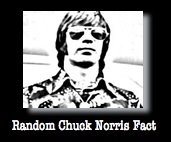I'm not really trying to make a theme out of today's blog posts, but kottke.org had this link about wagyu cattle from which Kobe beef comes from. As most of you know, I have this mild fascination with Kobe beef, with the glamorized stories of pampered cows imbibing on high quality beer or sake and getting massaged all day long. Maybe this has to do with the fact that I'm an ox myself (by the Chinese Zodiac).
I've actually only had Kobe beef a couple of times. The first was during a last minute Christmas dinner at a Korean BBQ place in Chicago in 2006, but those few morsels of meat were succulent and melted like heavenly butter in my mouth. More recently, I've been enjoying some tasty Kobe beef burgers at a local Dallas spot called Who's Who Burgers. The sign on the wall even proclaimed the health benefits of Kobe beef. Being high in linoleic acids (i.e. good fat), could the meat from the wagyu cow even lower your cholesterol and help you LOSE weight? Think about it. Burgers that are GOOD for you. And because these animals are pampered so well, I don't even have to feel guilty from the animal cruelty side of things.
Alas, it's probably not true. In fact, the wagyu cow may not be much different than eating baby cows and veal. From Gourmet:
While touring Japan in 1993, Blanc visited several major cities. As soon as he arrived in Kobe, he asked to see a beef farm. His request brought a surprisingly cool response from his hitherto accommodating Japanese hosts. “Yes, yes, yes,” they said, but it never happened. So Blanc organized his own trip to the countryside—and was shocked by what he saw.“The animals were kept in some kind of crate, so there could be very little movement. They were very dirty from their own manure—and I know a dirty cow from a clean cow. It was disgusting, such a contradiction from what I’d read.”
Blanc’s observations were confirmed for me by knowledgeable experts. David Blackmore, an Australian cattle rancher who has visited Japanese farms and agricultural centers a dozen times over the four decades he’s been in the business, raises an internationally renowned herd of 2,000 full-blood Wagyu (pronounced “wah-gyu” or “way-gyu”) cattle north of Melbourne. Wagyu, he explained, is the breed from which Kobe meat comes, but the meat can only properly be called Kobe if it comes from a pure strain of Wagyu raised in the Hyogo prefecture, which includes the city of Kobe.
Traditional Japanese producers, Blackmore said, raise their 1,600-pound cattle in highly confined areas. “From the time they are a week old until they are three and a half years old, these steers are commonly kept in a lean-to behind someone’s house,” said Blackmore, “where they get bored and go off their feed. Their gut stops working. The best way to start their gut working again is to give them a bottle of beer.
“The steers have been lying in their own manure,” he continued. “The farmers are proud of their cattle, and the first thing they do is grab a bit of straw and rub the manure off. That could be seen as be-ing massaged. Wagyu can also get a lot of joint swelling. I can imagine that the farmers would be massaging joints so they could get the animals off to market.”



1 comment:
It's funny how we Americans can make fool's gold look like gold.
Post a Comment